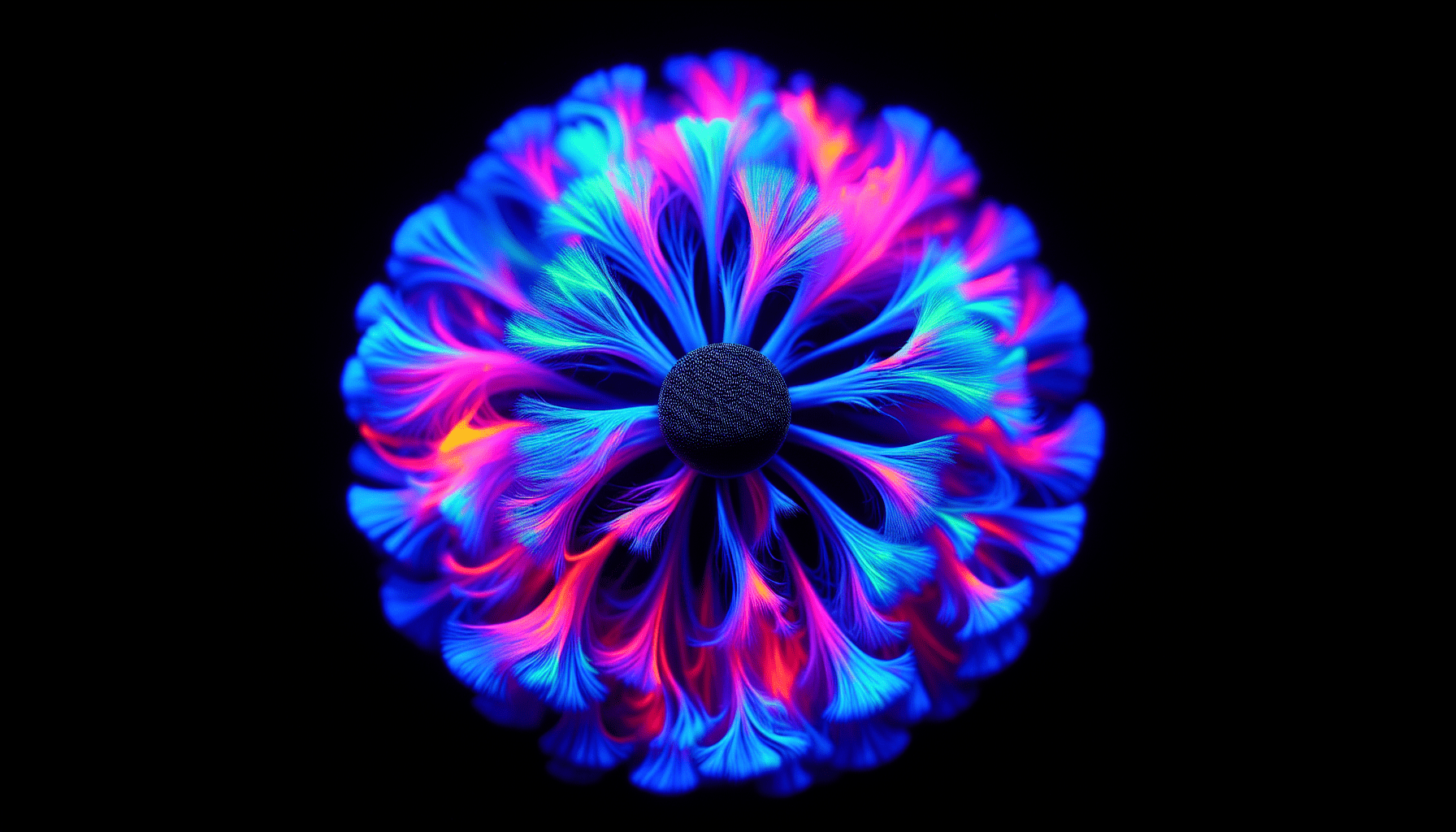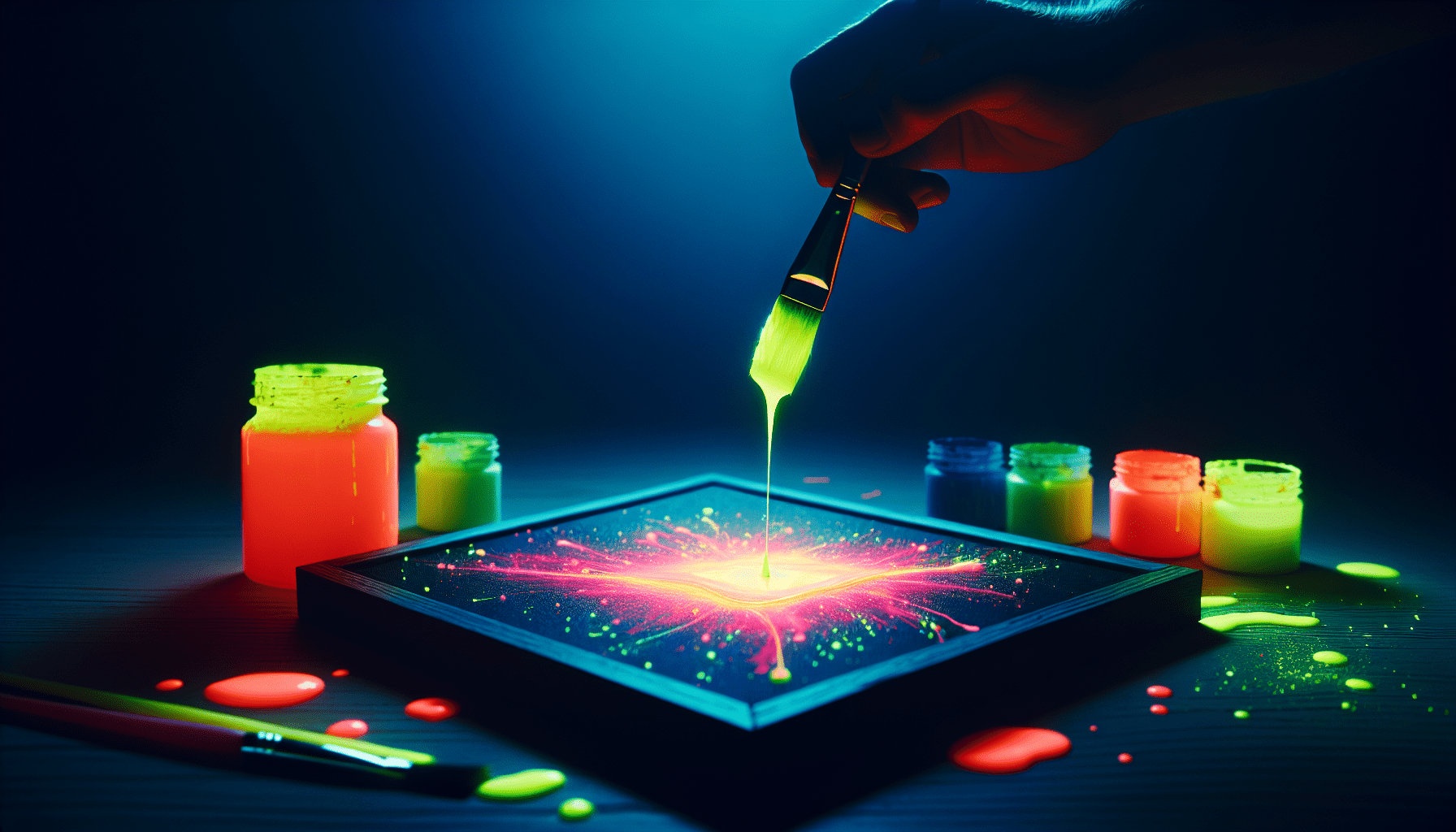Fluorescent paint can add a vibrant, eye-catching element to any project or surface. However, selecting the right base coat is crucial to achieve optimal results. In this article, you will explore the various options available for base coats when working with fluorescent paint. By understanding the importance of a solid base coat, you will discover how to enhance the intensity and longevity of your fluorescent paint application, resulting in a stunning and professional finish.
Choosing the Right Base Coat
When it comes to achieving the best results with fluorescent paint, selecting the right base coat is crucial. The base coat serves as the foundation for the fluorescent paint, impacting the final color intensity, fluorescence, and overall aesthetic of the finished project. In this comprehensive guide, we will explore different types of base coats and their benefits, considerations for application, primer selection, and the compatibility of base coats with fluorescent paints.
Primer Selection
Before delving into the specific types of base coats, it is essential to consider primer selection. Primers play a vital role in enhancing paint adhesion, improving color retention, and ensuring an even finish. There are various types of primers to choose from, including water-based, oil-based, and spray primers. The primer you select should be compatible with your chosen base coat and fluorescent paint.

Compatibility with Fluorescent Paints
Fluorescent paints contain special pigments that absorb and emit light in a unique way, resulting in vibrant and eye-catching colors. However, not all base coats are compatible with fluorescent paints. It is crucial to choose a base coat that enhances the fluorescent pigments’ properties, ensuring optimal color intensity and fluorescence.
Types of Base Coats
White Base Coat
A white base coat is a popular choice when working with fluorescent paints. It provides a bright and reflective surface that intensifies the colors applied on top. The white base coat acts as a canvas, allowing the fluorescent pigments to pop and create a striking visual impact. Additionally, a white base coat offers versatility, as it can be used with a range of fluorescent colors, from vibrant neon shades to more subtle pastels.
Light Gray Base Coat
If you want to enhance contrast and manage the translucency of your fluorescent paint, a light gray base coat is an excellent option. The light gray color provides a neutral background that allows the fluorescent pigments to stand out while providing a subtle tonal shift. This base coat is particularly useful when working with lighter fluorescent colors that might appear transparent or washed out on a white background.
Transparent Base Coat
While white and light gray base coats offer significant benefits, there are instances where maintaining the surface texture and color accuracy is essential. In such cases, a transparent base coat may be the preferred choice. The transparent base coat provides a clear foundation, allowing the true color of the fluorescent paint to shine through while preserving the texture of the underlying surface.
Other Color Base Coats
In some cases, a traditional white or light gray base coat may not be the desired option. This is where other color base coats come into play. By using a base coat in a color that complements or enhances the chosen fluorescent paint, you can achieve unique and eye-catching effects. Whether using a black base coat for a bold and dramatic look or a pastel base coat for a softer and more subtle appearance, exploring other color options can add depth and creativity to your project.

Benefits of Each Base Coat Type
Enhanced Color Intensity
One of the significant benefits of using a base coat is enhancing the color intensity of fluorescent paints. By providing a solid foundation, the base coat ensures that the fluorescent pigments can achieve their maximum vibrancy. Whether opting for a white base coat to make colors appear more vivid or a lighter gray base coat to emphasize contrast, the right base coat choice can significantly enhance the overall impact of your project.
Improved Fluorescence
Fluorescent paints are known for their ability to emit a vibrant glow under ultraviolet light. A suitable base coat can enhance the fluorescence of the paint, making it stand out even more in dark or low-light environments. The reflective properties of a white base coat, in particular, can make fluorescent colors appear brighter and more intense, creating a captivating visual effect.
Versatile Usage
Each type of base coat offers its unique advantages, allowing for versatility in your projects. Whether you want to create a bold and attention-grabbing design with a white base coat or achieve a subtle and nuanced effect with a light gray or transparent base coat, the versatility of base coat options enables you to tailor your project to your specific vision.
Considerations for Base Coat Application
Surface Preparation
Before applying a base coat, proper surface preparation is essential. Ensure that the surface is clean, dry, and free from any contaminants that could negatively impact paint adhesion. Depending on the surface material, it may be necessary to sand, prime, or apply a sealant before applying the base coat.
Application Techniques
Base coats can be applied using various techniques, such as brushing, rolling, or spraying. The chosen application technique may depend on the size of the project, the desired finish, and the type of base coat being used. It is important to follow the manufacturer’s instructions for the selected base coat to achieve optimal results.
Drying Time and Curing
Allowing sufficient drying time and ensuring proper curing is crucial for the longevity and durability of the base coat. Depending on the type of base coat and environmental conditions, drying times may vary. It is important to follow the recommended drying and curing times provided by the manufacturer to ensure the best possible outcome.
Primer Selection
Choosing the right primer is vital in achieving the desired finish with fluorescent paints. Primers act as a foundation, promoting paint adhesion and ensuring a smooth and durable surface. There are different types of primers available, including water-based, oil-based, and spray primers.
Water-Based Primers
water-based primers are popular due to their low odor, quick drying time, and ease of use. They are suitable for a wide range of surfaces and can provide excellent adhesion for fluorescent paints.
Oil-Based Primers
Oil-based primers are known for their exceptional adhesion properties and durability. They are ideal for surfaces that may be more challenging for paint adhesion, such as slick or glossy materials. However, oil-based primers tend to have a longer drying time and a strong odor, which may require adequate ventilation during application.
Spray Primers
Spray primers offer convenience and ease of application, particularly for smaller projects or intricate surfaces. They can provide a smooth and even base coat, allowing for a seamless application of fluorescent paint.
Primer Compatibility
It is essential to choose a primer that is compatible with both the base coat and the fluorescent paint being used. Ensure that the primer is specifically formulated for the surface material and has compatibility with the desired base coat and fluorescent paint. Consult the manufacturer’s guidelines and recommendations for optimal results.
Compatibility with Fluorescent Paints
When considering base coat selection, compatibility with fluorescent paints is of utmost importance. There are several crucial factors to consider to ensure optimal results when using fluorescent paints.
Adhesion
To achieve long-lasting and vibrant results, the base coat must provide excellent adhesion to the surface material. Poor adhesion can result in peeling, chipping, or premature wear of the fluorescent paint. Choosing a base coat that offers superior adhesion properties, specifically formulated for use with fluorescent paints, is essential.
Color Retention
Color retention is another essential aspect when selecting a base coat. The base coat should prevent color fading or any changes in the fluorescent pigments’ vibrancy over time. Ensure that the base coat is specifically designed to enhance the color longevity and prevent any undesirable alterations to the fluorescent paint’s appearance.
Fluorescent Pigment Suspension
Fluorescent paints contain special pigments that require proper suspension to prevent settling or clumping. The base coat should provide adequate suspension properties, ensuring an even and consistent distribution of the fluorescent pigments. This will contribute to a more uniform and vibrant final result.
White Base Coat
A white base coat is a versatile option when working with fluorescent paints. It offers several benefits that can significantly enhance the overall outcome of your project.
Reflectivity
The reflective properties of a white base coat make fluorescent colors appear more vibrant and striking. The white background acts as a canvas, allowing the fluorescent pigments to pop and command attention. This enhanced reflectivity is particularly advantageous when working with darker or more subdued fluorescent colors that might otherwise appear less intense on a different base coat.
Color Pop
When fluorescent paints are applied over a white base coat, they create a captivating visual effect. The bright white surface intensifies the colors, creating a captivating pop that grabs the viewer’s attention. Whether you’re working on a sign, artwork, or any other project that requires visual impact, a white base coat can make your fluorescent colors truly stand out.
Versatility
Another advantage of a white base coat is its versatility. It can be combined with a wide range of fluorescent colors, from neon hues to pastels, without compromising their vibrancy. This versatility allows you to create diverse and captivating projects, incorporating various color combinations and artistic expressions.
Light Gray Base Coat
For certain situations where contrast enhancement and translucency management are priorities, a light gray base coat is an excellent alternative to white.
Contrast Enhancement
While a white base coat intensifies fluorescent colors, a light gray base coat enhances contrast. When used with lighter fluorescent colors that may appear translucent or washed out on a white background, a light gray base coat provides a neutral background that allows the colors to pop while maintaining their subtlety. This contrast enhancement can add depth and depth to your work.
Translucency Management
Depending on the desired effect, maintaining the translucency of fluorescent colors may be essential. A light gray base coat can help manage the level of translucency, preventing colors from becoming too transparent or overpowering. This base coat provides a balanced background that allows the nuances of the fluorescent pigments to shine while ensuring their visibility.
Transparent Base Coat
In some instances, preserving the surface texture and color accuracy is of utmost importance. This is where a transparent base coat comes into play.
Maintaining Surface Texture
A transparent base coat allows the underlying surface texture to remain visible while still providing a suitable foundation for the fluorescent paint. This is particularly advantageous when working on textured surfaces or when you want to maintain the details and intricacies of the surface material.
Color Accuracy
When working with transparent or translucent fluorescent colors, utilizing a transparent base coat helps maintain the true color accuracy. Unlike opaque base coats, which may alter the appearance of the fluorescent pigments, a transparent base coat allows the colors to remain true to their original vibrancy and transparency.
Other Color Base Coats
While white and light gray base coats are commonly used, there might be instances where other color base coats can provide unique and aesthetically pleasing effects.
Resolving Color Shifts
Certain fluorescent paints can exhibit color shifts when applied over different base coats. Using a base coat in a complementary or color-correcting shade can help mitigate these color shifts and achieve the desired result. For example, a black base coat can provide a dramatic effect when working with fluorescent colors prone to color shifts, ensuring the most accurate representation of the intended colors.
Unique Aesthetic Effects
In addition to resolving color shifts, using other color base coats can create unique aesthetic effects. For instance, a pastel base coat can create a softer and more subtle look, enhancing the delicate nature of pastel fluorescent colors. By exploring base coat options beyond white or light gray, you can unleash your creativity and achieve truly one-of-a-kind results.
In conclusion, selecting the right base coat is crucial when working with fluorescent paints. It enhances color intensity, improves fluorescence, and allows for versatile usage. Considerations for base coat application involve surface preparation, application techniques, and drying time. Primer selection plays a vital role in promoting paint adhesion, color retention, and fluorescent pigment suspension. White base coats offer enhanced reflectivity and color pop, while light gray base coats enhance contrast and manage translucency. When preserving surface texture and color accuracy is vital, transparent base coats are the preferred choice. Lastly, exploring other color base coats can help resolve color shifts and create unique aesthetic effects. By carefully choosing the right base coat, you can achieve exceptional results with your fluorescent paint projects.



